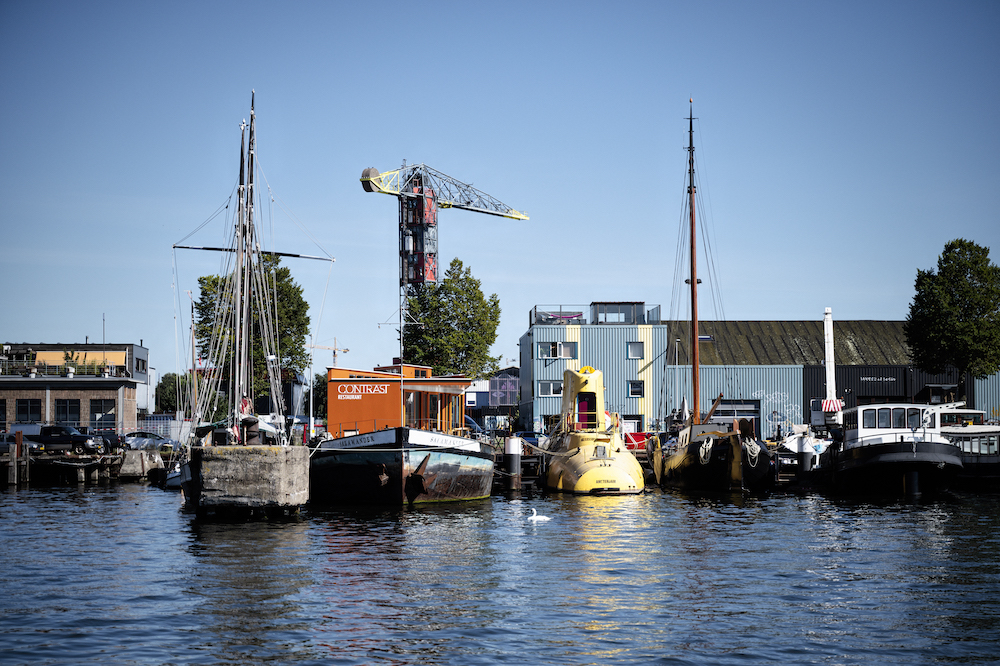
Like many locals, Pier and Jip regularly take the ferry across to the North part of Amsterdam to escape the chaos of the city and enjoy a day in the countryside. The ferries to what the Amsterdam people refer to simply as ‘North’, leave behind Amsterdam Central Station, are free of charge and for pedestrians and cyclists only. They are crossing continuously so, no need for reservations or tickets. Pier always recommends his friends from abroad to make this day-trip. Pier: “Amsterdam is a beautiful city but very different from the rest of our country. If you only have a few days in the Netherlands, it is great fun to rent a bike and hop over to the other side to get a taste of what we call typically Dutch: cows in the meadow, lots of water and old Dutch houses with wooden facades along the dikes.”
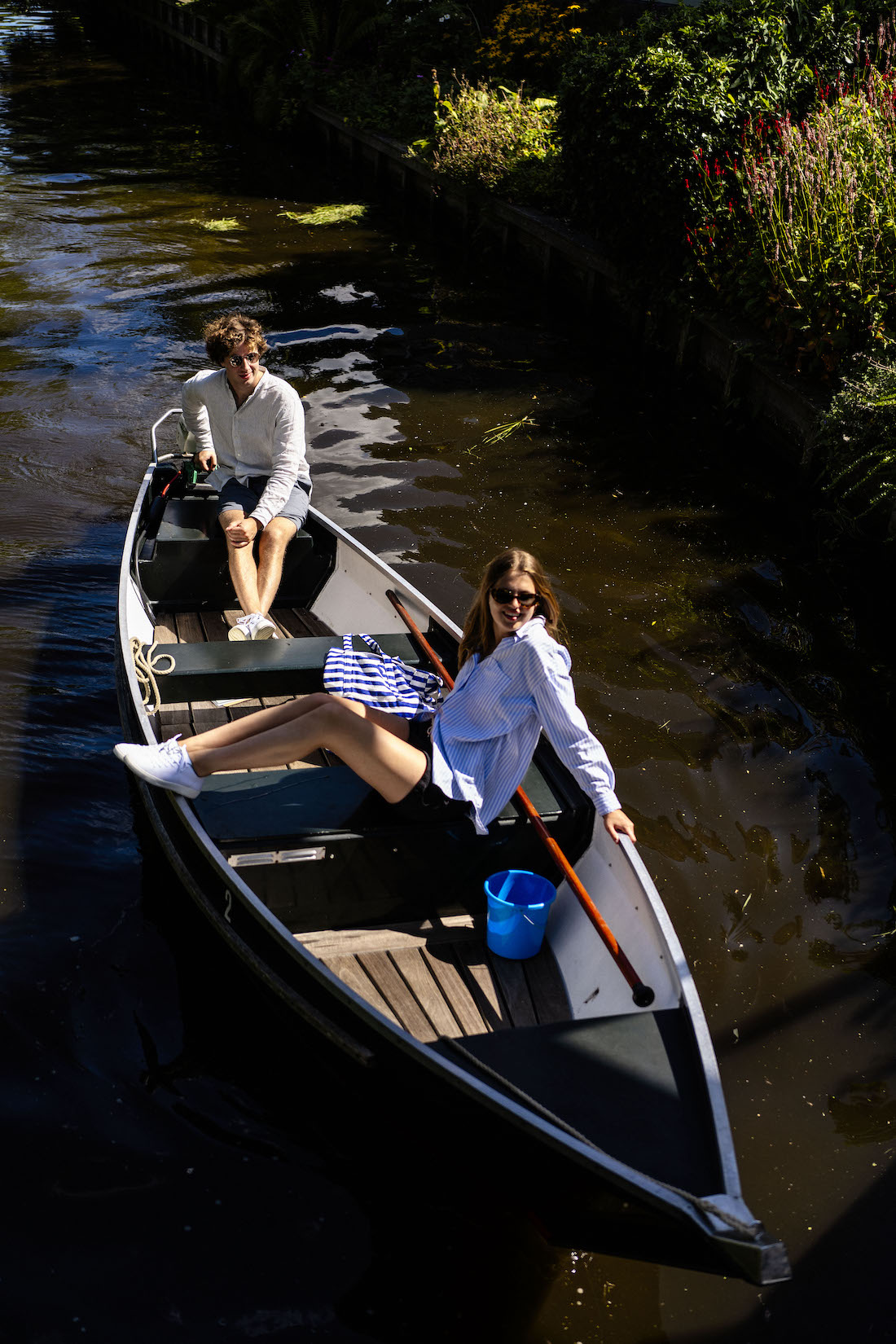
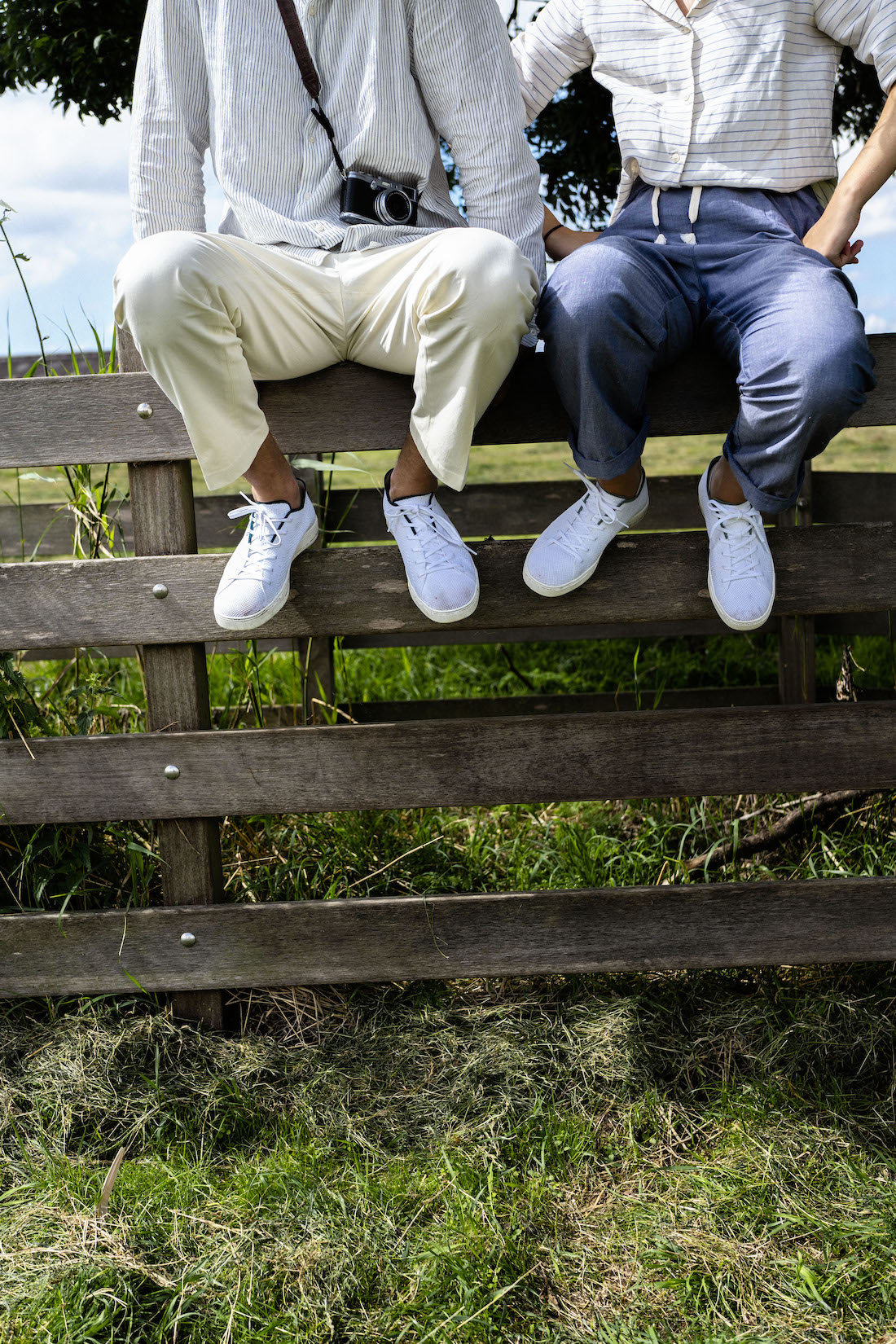
Today we take our bikes on the rightmost ferry to the IJ-plein for a day in the countryside. Immediately as we step off the boat we stumble upon the small coffee kiosk Al Ponte where Silvia has been brewing the perfect cup of Italian coffee for local residents and passers-by for almost 15 years. She will not allow you to look at your mobile phone while ordering. Rather, she will have a chat, hear how you like your coffee and will be happy to give you some tips for the rest of your day in ‘North’. She serves her coffees with a slice of lemon cake or a croissant to eat at one of the wooden picnic tables on the quay. The city sounds across the water seem to quiet down. There is only the splashing of the water and the cries of the seagulls. Even though the crossing did not last more than about seven minutes the hustle and bustle of the city seems far away here.
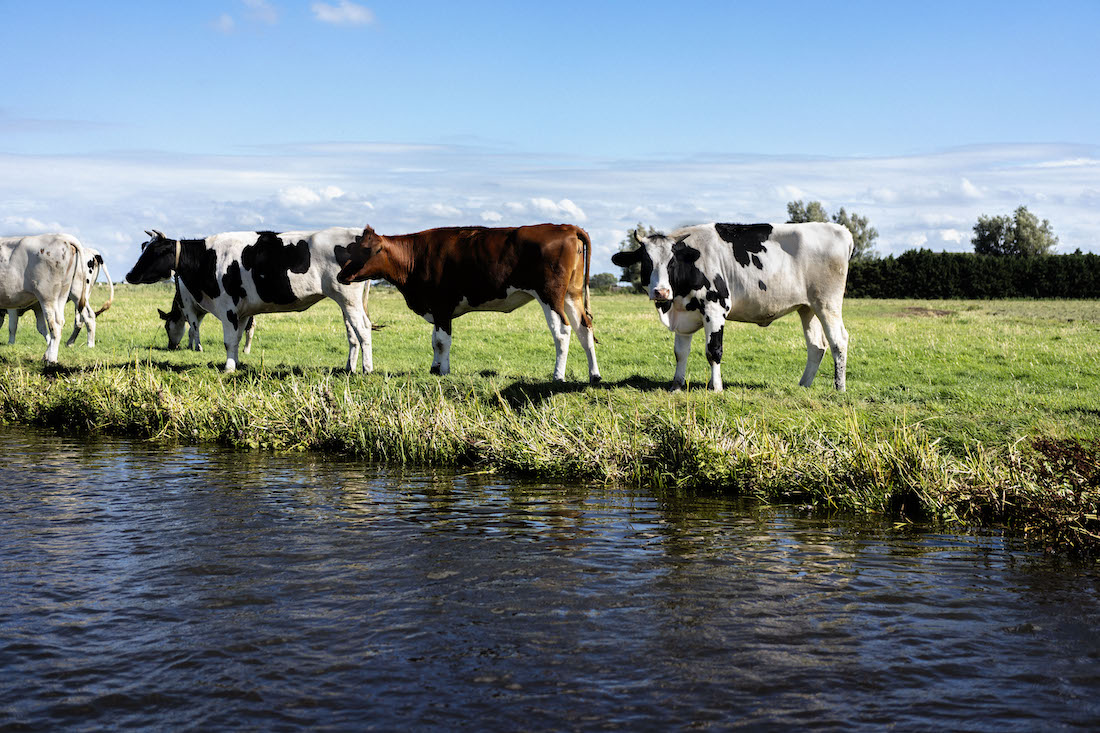
From IJ-Plein we cycle to the village of Durgerdam in 20 minutes. This six-century-old village lies like a ribbon of coloured wooden houses along the dike. Long ago when the water on its doorstep was still salty, Durgerdam was a fishing village. Since the construction of the so called Afsluitdijk (the dike that cuts off the former Zuiderzee from the Wadden Sea), the water is no longer salt but fresh and the fishing boats have given way to water sports enthusiasts. We picked a nice and sunny day, so residents sit on the wooden benches in front of their houses and laundry flutters on the washing lines on top of the dike. “Every household has its own washing line”, Pier explains. “Don’t you dare hang your wet towel there after swimming without asking permission first! The people of Durgerdam are very attached to their washing lines.” Durgerdam was declared a national protected village sight in 1976. The vast majority of the buildings, including the village church and a building with a bell tower known as the Chapel, are national monuments.
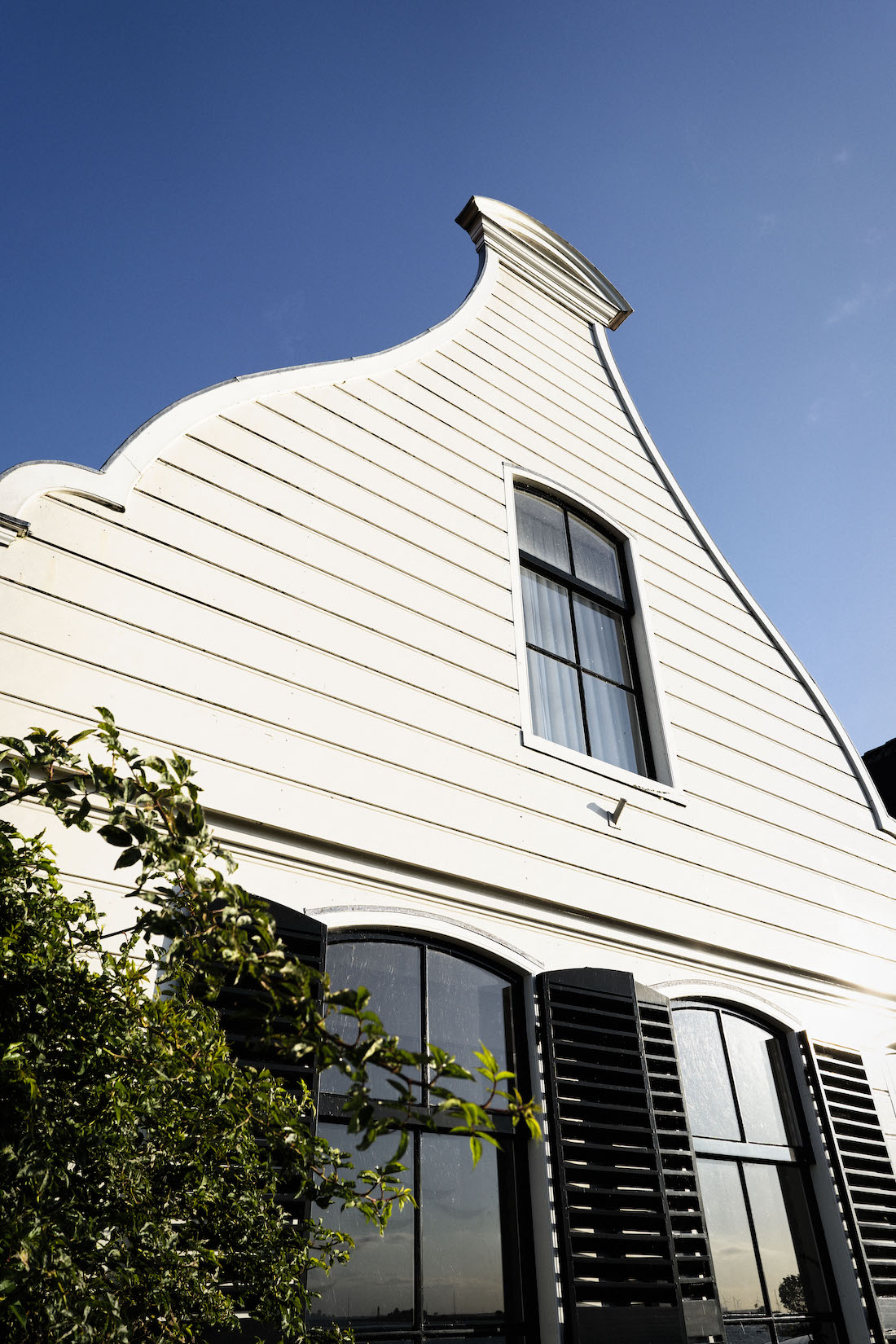
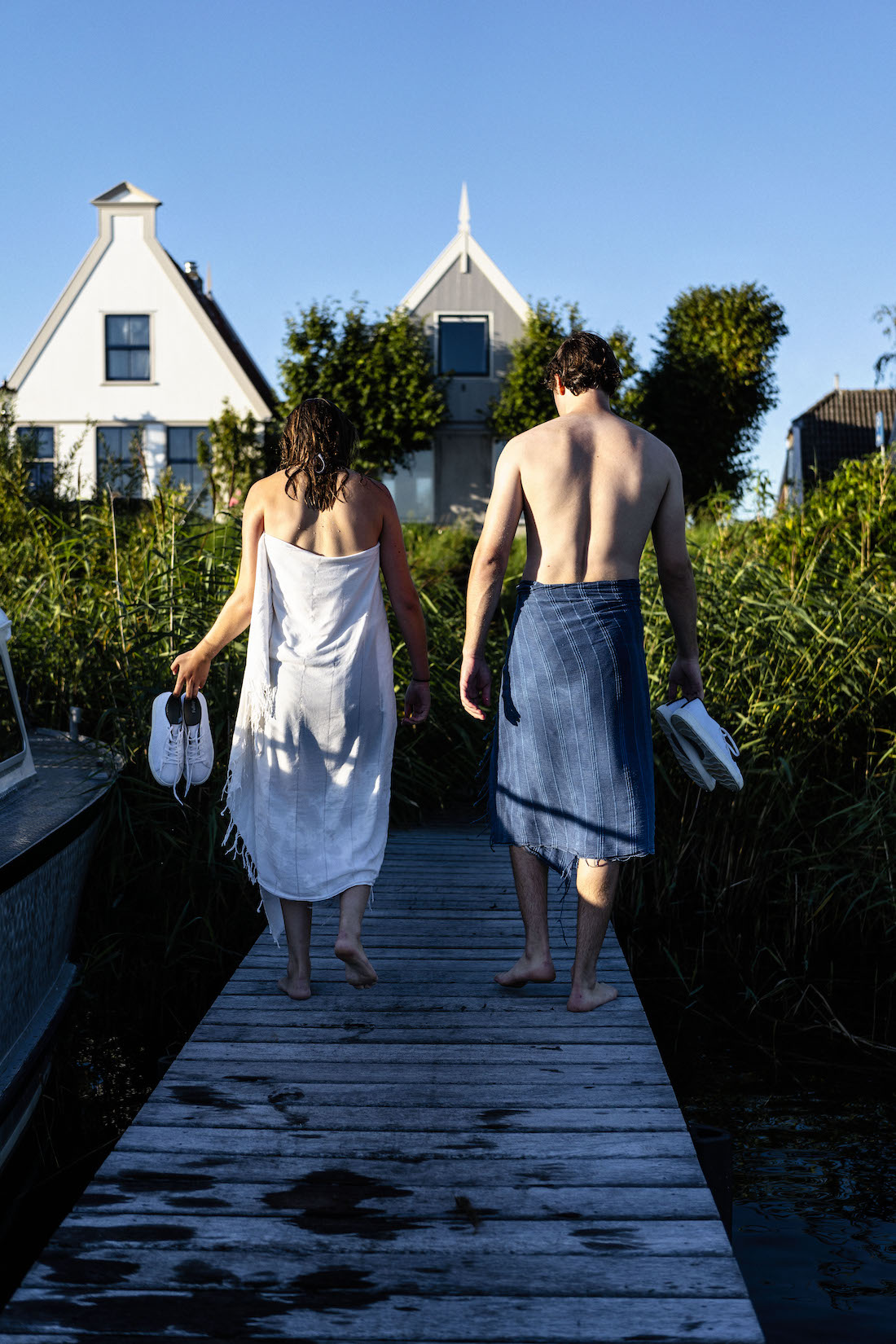
With the sea-gate closing, the fishermen disappeared and the glory days of the historic inn at number 73 seemed to be over. Until this spring, when the hotel reopened after a major renovation. The new Hotel De Durgerdam is all about the water that surrounds it: the waves in the fabric of the velour-covered sofas in restaurant De Mark, the glittering crystals, like falling water drops in the fishing net hanging above the regulars’ table, and the jetties in front of the terrace where hotel guests stroll in fluffy bathrobes and flip-flops for a fresh morning swim. For the interiors, the owners collaborated with Design Academy Eindhoven graduates Brecht Duijf and Lenneke Langenhuijsen, co-founders of Buro Belén. They succeeded in designing a sustainable hotel so rooted in its surroundings that it immediately evokes stories of its rich past. The earthy tones of the walls, the authentic tiling on the floors and the cast-iron stove to warm you during the damp, cold winter months: staying at The Durgerdam feels like being a guest in a painting by the famous Dutch masters Rembrandt and Vermeer.
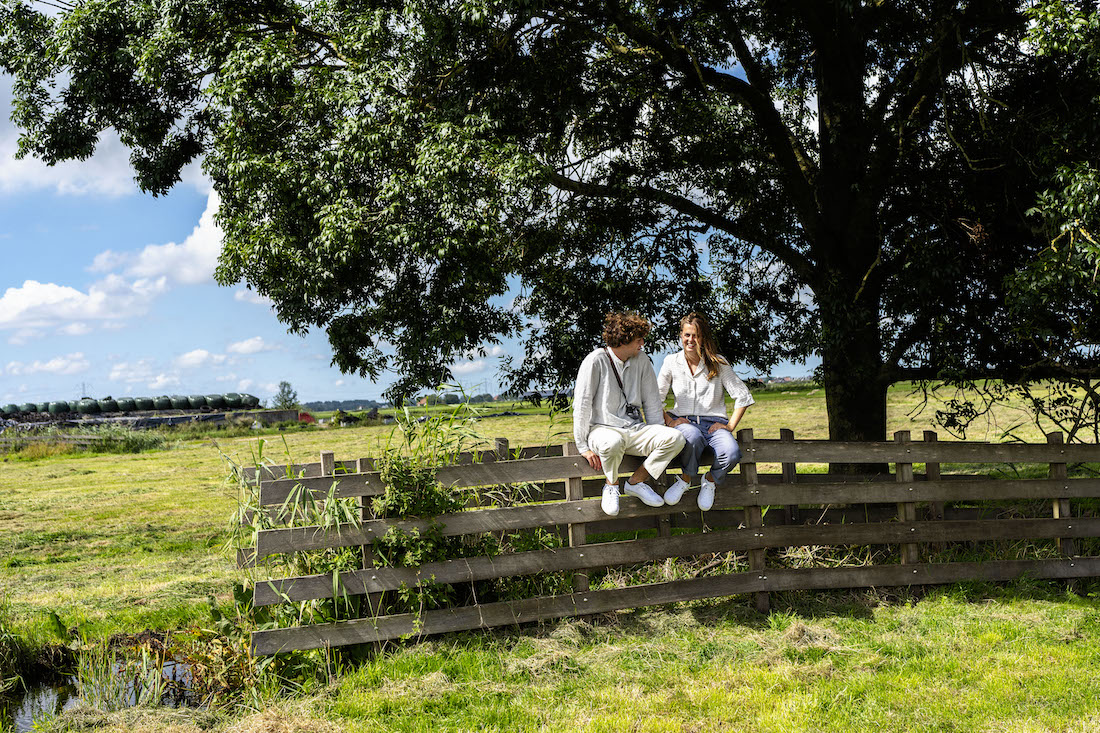
From the wooden chapel next to the marina, it is a 15-minute bike ride over the dike and across the meadows to the picturesque village of Holysloot. On the way, we see grazing herds of cows and sheep whose milk is made into cheese for sale at the farm shops. Once in Holysloot, we have coffee and apple pie at Het Schoolhuis, a café in a former school building. Pier: “For lunch, they serve Dutch pancakes with bacon and syrup. A real Dutch treat!” Pier and Jip take us to the boat rental company Holyboot. There are sloops or canoes to further explore the watery area. Jip: “They have sustainable boats with a small electric motor. We call them ‘whisper boats’ because they don’t make any noise, thus not disturbing the birds and other animals in the area.”
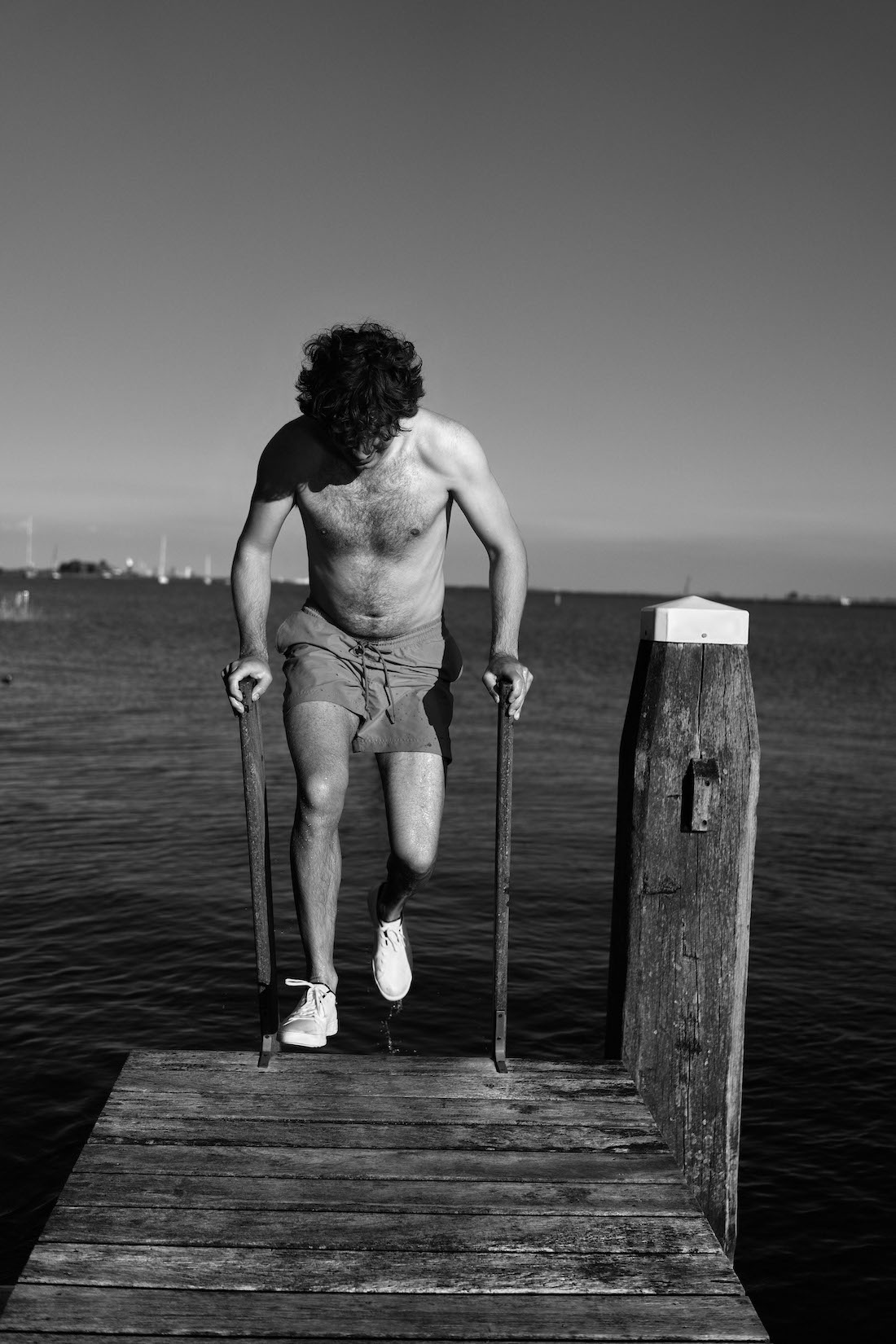
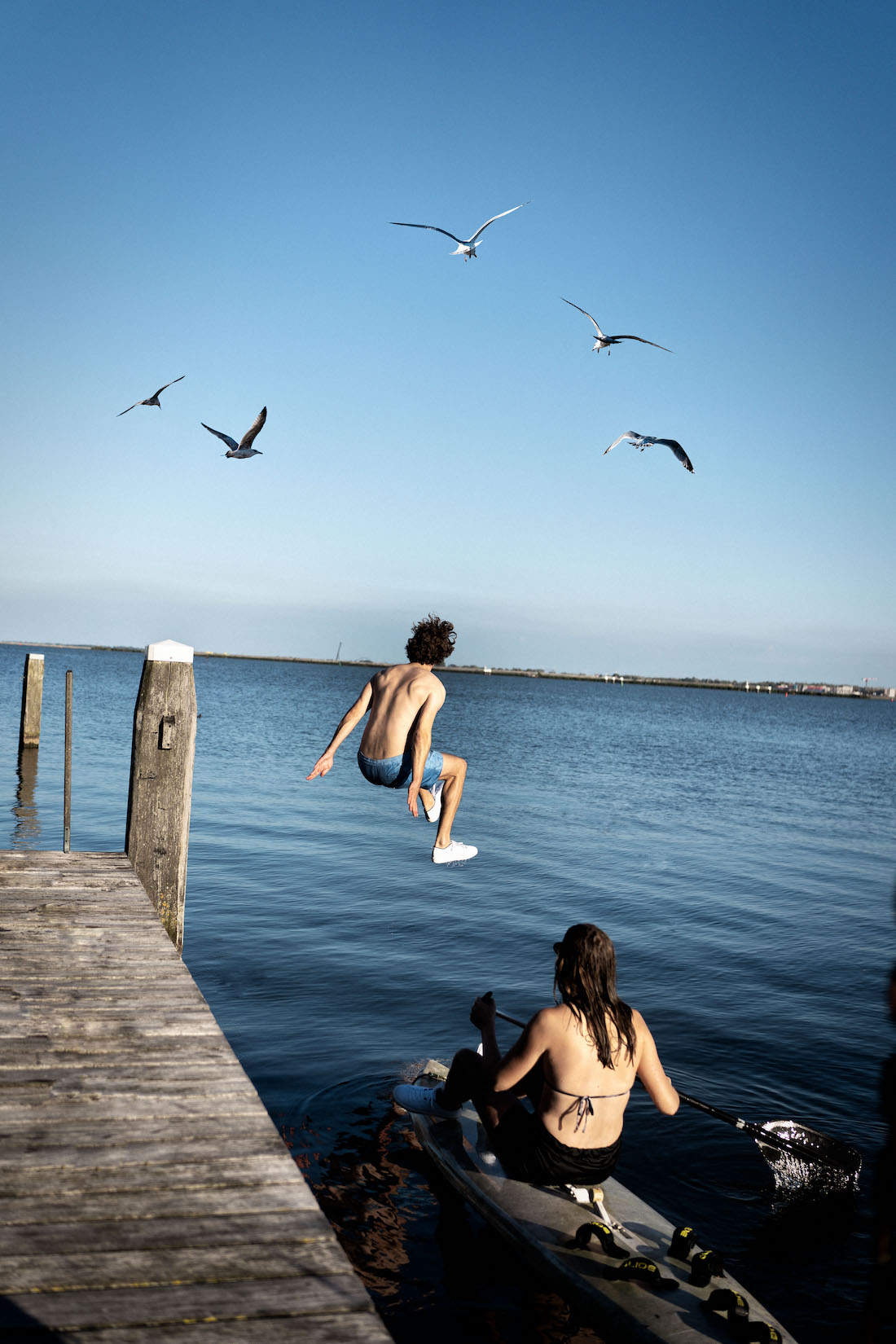
We are given a map with the most beautiful routes. Favorite is the short route (2 hours) to Zuiderwoude. The bridges on the way are so low that we have to bend down to sail under them. We stop at one of the swimming jetties among the swaying reeds for a swim. If you have binoculars, this is the ideal place to spot migratory birds. There are also longer routes that pass Monnickendam and the beautiful village of Broek in Waterland. Pier: “Visiting these villages relatively unknown to tourists is an excellent alternative to mass-tourism-plagued Giethoorn and Volendam. Along the way, you can stop at one of the teahouses for tea, cake and ice cream. One of my favourites is Teahouse Overleek near Monnickendam. They also rent out their own ‘whisper boats’ complete with a picnic basket to go.”
We are committed to making minimalist, durable lifestyle products that you can FEEL GOOD about wearing. Our extensive EXPERIENCE in the fashion industry enables us to source our most premium and durable materials, develop a streamlined and traceable supply chain, and create versatile sneakers with STYLE and LONGEVITY in mind. After all, the longer we can wear each pair of shoes, the less waste we produce.
© 2022 Fullup.Official